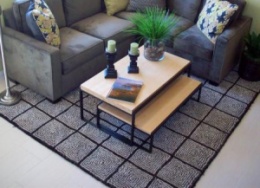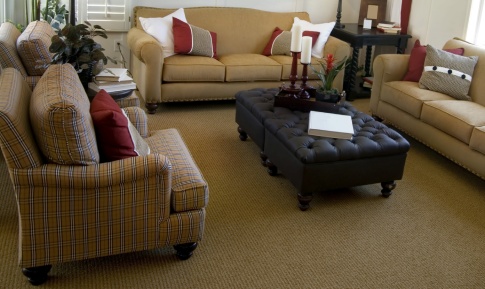All carpet is created from the conversion of fibres. Generally, fibres are spun into yarn and the yarn becomes carpet by being weaved, tufted, or bonded. Each fibre has unique benefits that will influence whether it is suitable for your space.
Nylon
The most popular carpet on the market as it’s present in about 60% of the carpets in the US. This fibre is highly durable and resists wear and tear well. Since nylon fibres are not inherently stain repelling, carpet manufacturers treat the fibres with a stain repelling system such as Shaw’s R2X.
Olefin
This fibre is less resilient than nylon but is still a strong and resistant choice. On the other hand, it’s less likely to fade in colour. Olefin is a great choice for an outdoor carpet as it is mold and mildew resistant plus it’s not very comfortable to walk on with bare feet.
Polyester
This fibre choice is becoming more popular as it is a more cost effective option than other fibres. Polyester is also less resistant than nylon. It shows damage and fades, so it’s not a good choice for high traffic areas. If your polyester carpet has a thick cut pile construction, it can be very soft to the touch.
Acrylic
This carpet option is not a widely used option. It looks and feels like it is wool, but is a less expensive substitute. It’s resistant to mold and mildew.
Wool
Made from all natural fibres, wool is the most expensive carpet option. It’s known for being a durable option that feels great. Both stain and dirt resistant, this carpet does fade in direct sunlight.


